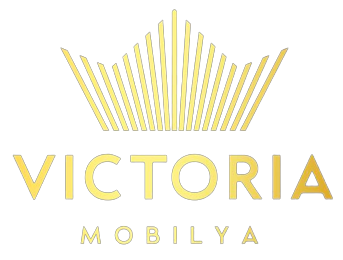
This practice can reduce household water usage by up to 40%. ENERGY STAR focuses primarily on energy efficiency but includes water-using appliances like dishwashers and clothes washers. These products save both water and energy, offering double benefits.
The 20-Minute Whole-House Leak Detection Method
Avoid these common pitfalls when learning how to conserve water at home. Make sure all air registers are clear of furniture so that air can circulate freely. If your home has radiators, place heat-resistant reflectors between radiators and walls.
Bathroom Water Conservation (Where 50% of Indoor Water Goes)
If consistently above 60 PSI, a PRV pays for itself through water savings and prevented repairs. While installation requires basic plumbing skills, these systems save 3,000-5,000 gallons annually for typical families. Garbage Disposal Alternatives Garbage disposals require significant water to operate properly. Consider starting a compost bin instead—you’ll conserve water while creating valuable fertilizer for your garden. If you must use the disposal, run it only when necessary with cold water for the minimum time needed. Keep abreast of local water conservation programs and initiatives.
How Much Does it Cost to Charge an Electric Car?
- While installation requires basic plumbing skills, these systems save 3,000-5,000 gallons annually for typical families.
- Dishwashers typically use less water than hand washing, especially if you run them with full loads.
- Practicing ways to reduce unnecessary water usage is referred to as water conservation.
- Check your meter monthly and compare readings to your bill—unexplained increases often signal new leaks.
- We recommend picking 10 water conservation tips to start focusing on.
- Implementing basic water conservation tips can eliminate most of this waste.
Water saving tips and water conservation tips should be shared with others around you. If you’re reading this, you must be in search of tips to conserve water resources. Did you know that water is a limited resource or did you just discover this? Awareness is one of the first steps toward protecting our environment and its natural resources. Food supply and clean water are necessary for our survival.
- Outdoor water use can account for 60% of household consumption during summer months.
- This sustainable practice reduces reliance on municipal water sources and helps manage stormwater.
- Share your knowledge with friends and family to expand the impact of your efforts.
- Report any leaksWhether you notice a leak on campus, in the neighborhood, or at home – report it!
- Skip pre-rinsing—today’s models are designed to handle food particles.
Whether pin up online casino you are trying to save money or reduce carbon footprint, you should consider switching to a renewable energy plan with Inspire. Inspire provides homeowners with clean energy for one flat price. The average household wastes approximately 10,000 gallons annually through leaks alone—equivalent to 270 loads of laundry. Additional waste from inefficient fixtures and poor habits can double this figure. Implementing basic water conservation tips can eliminate most of this waste.
Take action to inform a responsible authority of the leak you noticed. If you rent your home or live on campus, it’s the property owners responsibility to repair leaks. However, in order to repair them they must know about the leak.
Pressure Reduction: The Hidden Water Waster
You can also install a low-flow showerhead to maintain a satisfying pressure while using less water. Take shorter and more efficient showersShorter showers help students save water. While the shower can be a comfortable spot to unwind after a long day, we encourage students to get in and out of the shower as quickly as possible. In addition, if students can brush their teeth and or wash their face in the shower this may help save water. Renters face unique challenges when implementing water conservation tips for home, but many effective solutions require no permanent changes or landlord approval.
Time Your Showers
Naturally, you will find ways to limit your usage just by being aware. The myth persists that hand washing saves water, but modern dishwashers use 3-5 gallons per load versus up to 27 gallons for hand washing. Always use the dishwasher when possible, but wait for full loads to maximize efficiency.
According to Macro Trends3, the U.S. population increased 0.58% from 2020. As the population continues to increase, so does the need for saving water. With the recent pandemic, many of us have taken up more at home hobbies such as gardening. While gardening is a healthy and practical activity, it requires water.
Check your meter monthly and compare readings to your bill—unexplained increases often signal new leaks. Understanding your water meter helps identify leaks and track conservation progress. Most meters have a small triangle or dial called a leak indicator that spins when water flows through the meter. If this moves when no water is being used, you have a leak.
These simple habits form the foundation of any successful conservation plan. For the average American household, almost half the annual energy bill goes to heating and cooling – more than $900 a year! Being smart about how you control your temperature settings will help you save money and stay comfortable in your home. If possible, install a smart thermostat to automatically adjust your home’s temperature settings for optimal performance. An ENERGY STAR certified smart thermostat can reduce your heating and cooling bill by more than 8% and save you about $50 a year, on average.
Is it important to conserve water and why?
If we do not conserve water, both of these necessities are at risk. The easiest of all water conservation tips for home requires no equipment or expense—just awareness. Turning off the tap while brushing teeth saves up to 8 gallons per day per person. For a family of four, that’s nearly 1,000 gallons monthly. Similarly, turning off water while shaving can save another 300 gallons per person monthly.
Outdoor water use can account for 60% of household consumption during summer months. These water conservation tips for home help maintain beautiful landscaping while dramatically reducing usage. Reducing shower time by just two minutes saves up to 150 gallons per month per person. The average shower uses 2.5 gallons per minute, so a 10-minute shower consumes 25 gallons. By cutting this to 8 minutes, a family of four saves 600 gallons monthly. Before investing in new fixtures or technology, these free strategies for how to save water can reduce your usage immediately.
